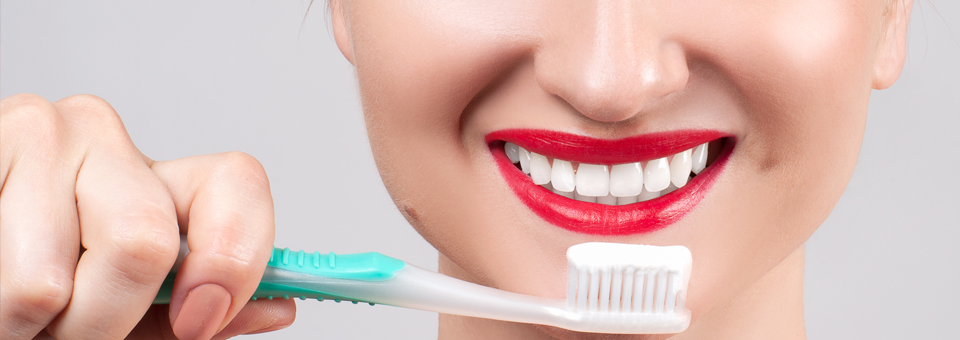
I met my wife Barbara when I was writing my second PACE book. I was working on the design when a friend recommended her to model for the cover.

My wife Barbara has such a beautiful, glowing smile.
We quickly became friends and soon I invited her out to dinner. She told me that she didn’t just work as a model but had a day job with a cosmetic dentist. I could see why she modeled. Her smile was contagious.
And the rest is history.
I think we all want a bright, white smile to show off. After all, pearly white teeth can make you look five years younger.
But whitening toothpastes actually make your teeth duller and darker.
Let me explain…
Whitening toothpastes use harsh abrasive agents like silica or calcium carbonate to rub away surface stains. Some of them also use various chemicals or enzymes.
They can damage your tooth enamel. And as the abrasives wear down enamel, they expose your tooth’s dark inner dentin.
A study of 26 whitening toothpastes in the Journal of Clinical Dentistry found that many of the leading brands were so abrasive that they permanently damage teeth when used regularly.1
In one experiment, six women used different leading brands of whitening toothpaste like Rembrandt and Oral B. After a month, none of them saw any change at all in tooth color.2
And in another clinical trial, people used Arm & Hammer whitening toothpaste. After a month, 43% said their teeth looked the same — or got even darker.3
Most of these toothpastes also contain toxic ingredients like fluoride and sodium lauryl sulfate (SLS). SLS combines with other chemicals to become nitrosamine, a powerful cancer-causing agent.
I don’t recommend wasting your money on whitening toothpaste. I prefer all-natural brightening toothpaste made from bentonite clay.
When bentonite clay is mixed with water it produces an “electrical charge.” Those charged particles bind and draw out impurities, heavy metals and toxins from your teeth.
But it’s also full of minerals that help rebuild healthy enamel. It’s alkaline so it changes the pH of your mouth so bacteria can’t stick. It’s also slightly abrasive so it gently removes plaque but won’t damage enamel.
Trading in your over-the-counter toothpaste for this natural solution will quickly give you healthier, whiter teeth.
You can buy all-natural clay toothpastes in health food stores and online. But you can also make your own at home.
Look for either “montmorillonite” or “bentonite” clay. I add xylitol, a natural sugar alcohol. It adds sweetness to the paste but it’s also been shown in studies to reduce cavities. It helps loosen plaque and improves tooth cleaning.
Here’s a good recipe for a clay toothpaste that I recommend:
Natural Clay Toothpaste Recipe
Ingredients:
- 2 tbsp bentonite or montmorillonite clay
- 3 to 4 tbsp distilled or boiled water that has cooled
- 4 drops tea tree essential oil
- 5 drops xylitol
- 10 to 15 drops peppermint essential oil
- A pinch of Himalayan sea salt
Directions:
- Combine water with clay in a non-metal bowl.
- Mix well with a non-metal spoon (the clay should never come in contact with any metals).
- Add xylitol, salt and essential oils. Mix well.
- Let sit for 48 hours.
- Taste and adjust water, xylitol, and essential oils to your desired taste and consistency.
- Store in a glass jar.
To use, dip your toothbrush into the paste and brush as usual.
To Your Good Health,
![]()
Al Sears, MD, CNS
1. Schemehorn B., et al. “Abrasion, Polishing, and Stain Removal Characteristics of Various Commercial Dentifrices In Vitro.” J Clin Dent. 2011;22:11–18.
2. Coleman, C. “Is whitening toothpaste just a waste of money?” 20 January 2013. Mail Online. http://www.dailymail.co.uk/femail/article-2265539/Is-whitening-toothpaste-just-waste-money-They-promise-dazzling-Hollywood-smile-investigation-reveals-products-barely-make-difference.html Accessed 8/17/17.
3. Hiyaguha Cohen, “Whitening Toothpaste: Is it Safe? Effective?” https://jonbarron.org/natural-health/whitening-toothpaste-it-safe-effective. Accessed 8/18/17.








